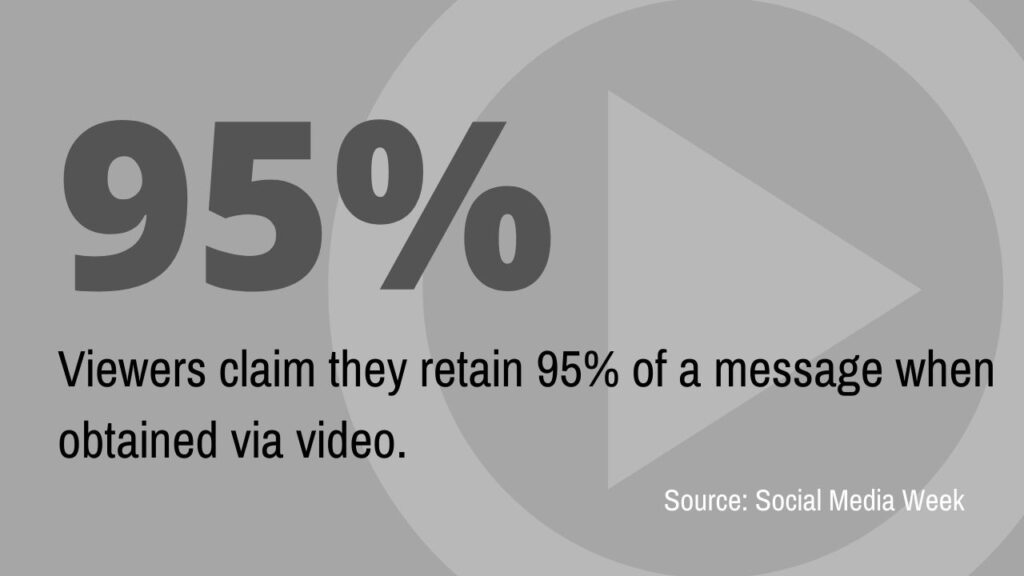Recruiting Videos: creating a plan to attract quality employees
 If you work in corporate recruiting, I don’t have to tell you how competitive it is to hire good people. It’s insane! Getting the right people on the bus is as tough as it’s ever been, which is why it’s so important to create high quality recruiting videos.
If you work in corporate recruiting, I don’t have to tell you how competitive it is to hire good people. It’s insane! Getting the right people on the bus is as tough as it’s ever been, which is why it’s so important to create high quality recruiting videos.
They have become one of the most valuable tools in your recruiting toolbox. In this post, I’m going to break down some reasons why you should be producing them, as well as a case study from one of our customers who put together a terrific recruiting video plan.
Why Recruiting Videos Are Important
It used to be that having a recruiting video was a luxury. Big companies might produce them, but they didn’t seem necessary for medium and small organizations.
Well, those days are over. I don’t care wether you’re a Fortune 500 company or a traditional small business, recruiting videos are now a staple for recruiters.
They’re important for the same reason an About Us video is important to the marketing department. For many prospective employees, recruiting videos will be their first chance to see and hear from people what the company is all about.
A nicely designed recruiting webpage is nice, but having videos to offer takes things to a whole new level. Compelling copy at an online recruiting platform is great, but a video showing prospects what it’s like working at the business is event better. A social media post or ad can be helpful, but one with video will likely get you more clicks.
Check out these stats via Stories Inc.
- Video posts on LinkedIn are shared 20 times more than other formats
- Job postings with video icons are viewed 12% more than postings without video
- Job ads with embedded video get 800% more engagement
- Job postings with video have a 34% greater application rate than those without
Video catches people’s attention, and if they likely what they see, encourages them to take action and apply.
In many ways, recruiting videos are your first step in creating a good first impression about your company.
Creating a Recruiting Video Plan
Okay, now that you’re onboard, it’s time to make a plan.
Yes, you need a plan. It’s not good enough to simply produce a video and wipe your hands of the project once it’s done.
Nope.
You are putting all sorts of time and effort into creating these videos. Video production cost is also a factor. You need to do this right.
I want you to approach this the way your marketing folks should be approaching their marketing videos. Let me take you through some steps.
Audience: the first thing you need to do is identify your audience. This might be obvious (job candidates), but the better you can fine tune this, the more effective your videos will be. For example, one video might be a broad audience, anyone applying to your company. Another might focus on specific job types.
Channels: next, you want to determine where you’re going to show the videos. Your website? Naturally, but where else do you want to use them. This could impact the number one question I always get… how long should my video be? It’s all about push and pulls. If the primary use for the recruiting videos is social media, you want to keep them short (1-minute or less) because it’s a push situation. The social media audience didn’t ask for your video, you’re pushing it on them. On the other hand, if they came to your website or found you on a job recruiting platform, they have come looking for information about you, so it’s a pull situation. This means you can give them more (1-3 minutes).
Goal/Measurement: finally, you want to set a goal for the videos and figure out how you’re going to measure whether or not they’re successful.
This is sooooo important. It’s going to help you with a couple of things for the future. It will show you what types of videos are most effective, and provide you with hard data for getting a budget for more videos.
Maybe you have an ad and want more people clicking on it. Maybe you have a page at a recruiting platform and need to get more people to fill out your application. Regardless, once you have your video(s) in place, make a note when they went live so you can go back later to track performance. Then, pick a time period prior to the video and compare it to a time with the video.
Did you get more clicks? Are more people filling out the application? You now have hard data!
Types of Videos
Okay, now that we’ve defined our audience and figured out where we’re going to post our videos, we should probably decide what types of video we need to produce. The great thing here is that you’re only limited by your own imagination. I’ll give you a list of popular types of recruiting videos, but this is just a jumping off place.
- About Us: your marketing department may have already produced this one showing who you are as a company, what you do, and why you do it.
- Company Culture: similar to the About Us video, but focused more on what it’s like to work at the company.
- Employee Features: I’m not going to lie, these are my favorite. Produce videos featuring individual employees, and I’m not talking about the C-suite. You’ll be surprised by the stories you’ll find. My all-time favorite employee story was part of a series on the corporate values at Catholic Health Initiatives. The video on compassion focused on someone who holds a position you’d never think to feature. That’s my tease to watch it! 😉 Luckily for you, it’s included here. ➡️
- Company Initiatives: show people different things you’re doing inside the company to make it a great place to work.
- Product/Service Videos: again, you may be able to look to marketing for these videos, but you can use them to give prospects a better idea about what your company sells.
Want to do something more creative? Go for it. As long as you think your audience will connect with it, and it will serve your goals, then produce away!
Rise Interactive Recruiting Videos Case Study
One of our customers have done an awesome job creating a whole series of marketing videos, and they’re a great case study on how to do it.
Rise Interactive is a digital marketing agency that focuses on using data to help drive business growth. Their business is growing and they are consistently recruiting new Risers, so they wanted to create a bunch of videos to serve various needs and audiences.
Again, I can’t stress enough how important it is to define your audience. In the case of Rise, they focused on three audiences.
- General applicants, anyone applying to the company.
- Early career applicants, people just getting their careers started.
- Established career applicants, people who have been in the workforce for a while but are looking for better career advancement.
Once they defined their audience, Rise leaders did something I love. To help them decide on what videos they would produce for these audiences, they gave them names.
Company Vision: the video Rise produced for their general audience was all about the company’s vision for where they started, where they are, and where they’re heading. It features the CEO as well as various leaders talking about how they see the company.
Now is the Time: this video was focused on early career applicants. It features a few Risers who are just getting their careers started and why they chose Rise.
Come Grow with Us: this video was directed at people who are already established in their career, but are looking for career advancement. It’s similar in look and feel to “Now is the Time,” only instead of new Risers, we hear from Risers who have worked at the company a while and have advanced up the ladder.
Day in the Life: finally, Rise produced a pair of videos featuring different employees. One is a newer front line employee and the other is someone in a leadership role. Again, you see how they’re focused on the audiences they defined?! These videos give the audiences a feel for what a typical day on the job is like for each of those roles.
Rise is using the videos on a few different platforms.
- Company website (Careers page and About Us page)
- Recruiting platforms
And these are self-professed data geeks, so you know they’re tracking the numbers. Hopefully, I’ll update these post in the future with some of their numbers.
Don’t Forget This Last Step
Now, following all of these suggestions is great, but don’t leave out a crucial last step. You need to promote your videos.This isn’t something that should be done willy-nilly. This is an important part of the plan. You can produce the best recruiting video in the world, but if nobody watches it… what’s the point?
So be intentional about creating a promotion plan. Where are you going to show it? Is it something that lives on a page, or does it need to be continually posted?
- social media
- company newsletter / e-mail campaign
- company website
- blog
- recruiting channels
Do you have plans to show it in other places? Great! Write them all down. Create a plan for how and when you’re going to get your video(s) to the world.
Wrap
There’s just no way around it. Recruiting videos are no longer luxury, they’re now a best practice. If you want to recruit the most talented applicants you can find, you should have some videos in your tool belt.
Producing quality recruiting videos will set you up for recruiting success.



 When you absolutely need to get an important message to a community… email isn’t your only route. As a matter of fact, you should be using multiple methods.
When you absolutely need to get an important message to a community… email isn’t your only route. As a matter of fact, you should be using multiple methods.
 Let’s start by being honest with ourselves. There are countless examples of terrible corporate videos. Irrelevant About Us videos, boring product videos, uninteresting testimonials… but the crown jewel of them all are HR videos.
Let’s start by being honest with ourselves. There are countless examples of terrible corporate videos. Irrelevant About Us videos, boring product videos, uninteresting testimonials… but the crown jewel of them all are HR videos. The most important question
The most important question When in doubt, do this
When in doubt, do this


